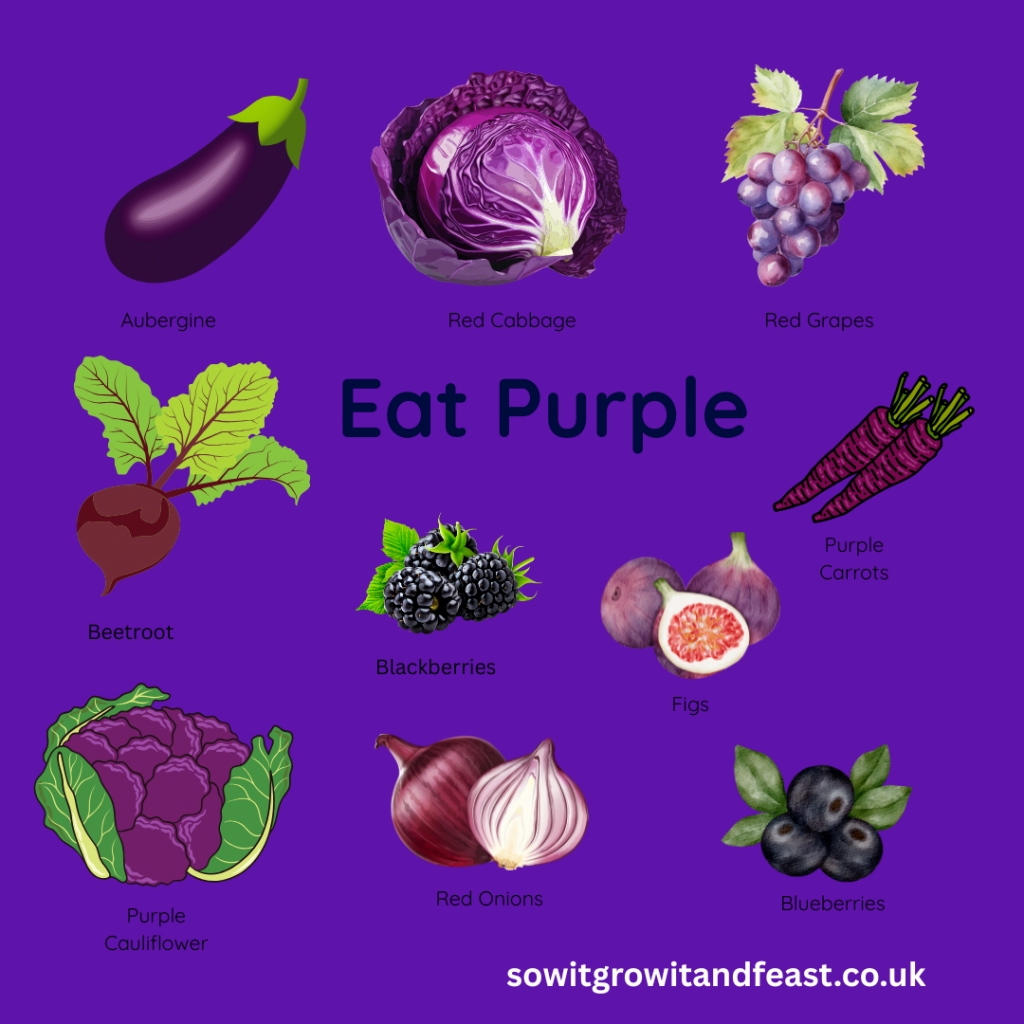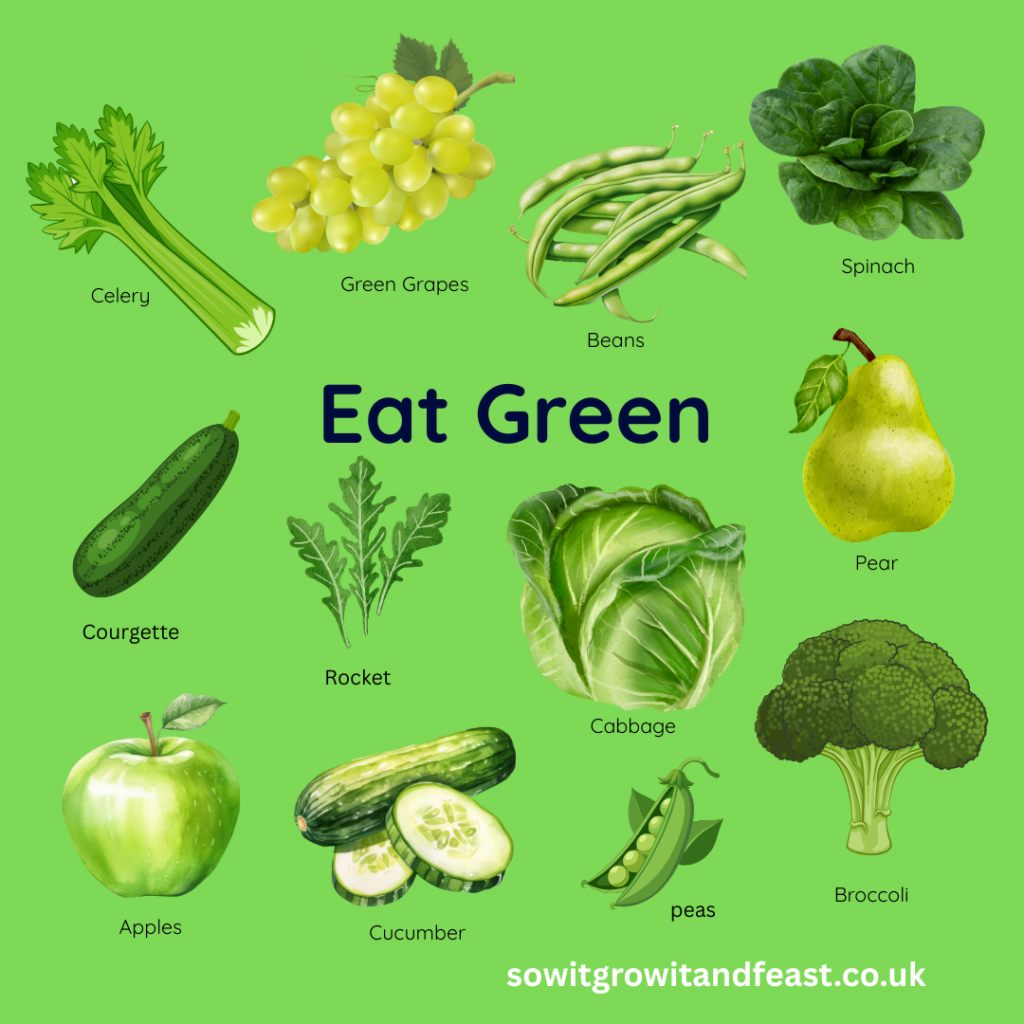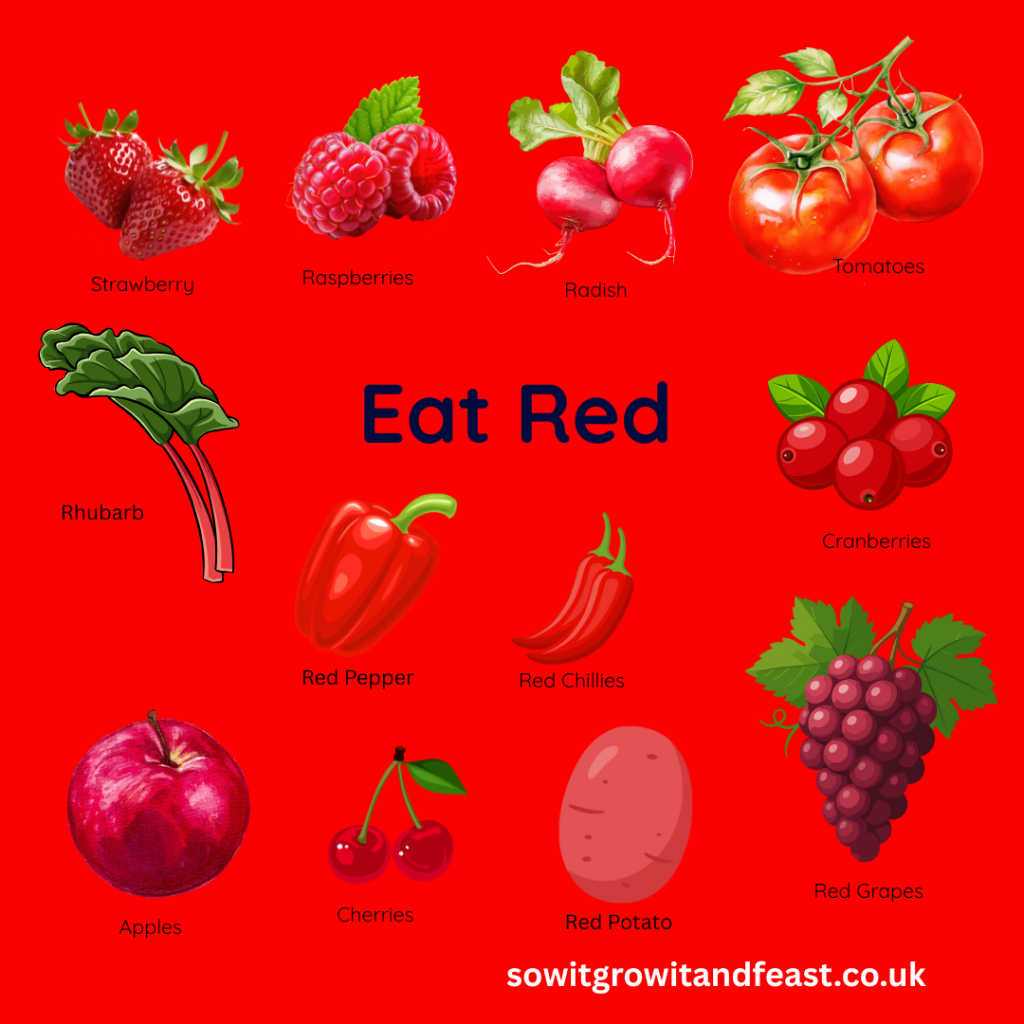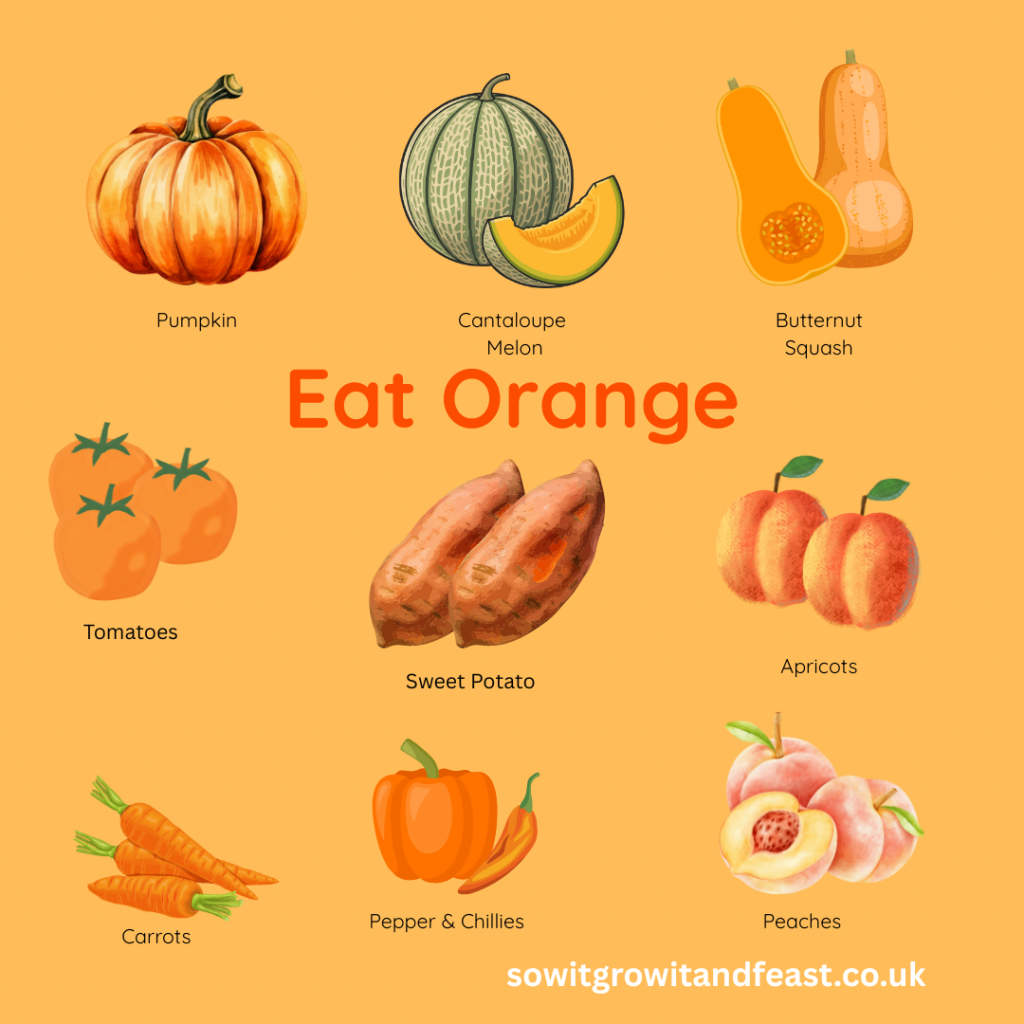We often hear the phrase “eat the rainbow,” a simple reminder to fill our plates with a wide variety of colourful fruits and vegetables. Each colour group offers a unique set of nutrients and health benefits. While greens might get most of the attention and berries are praised for their antioxidants, it’s time to shine a light on the cheerful, sunny foods in the yellow category.
Eating more yellow foods is a simple and delicious way to boost your health. These vibrant fruits and vegetables are packed with essential vitamins, minerals and powerful compounds that can support everything from your immune system to your mood. This guide will explore the many reasons why you should be adding more yellow to your diet. Discover the specific benefits of popular yellow foods and find easy ways to incorporate them into your daily meals.
Get ready to explore the wonderful world of yellow foods and learn how they can help you feel your best.
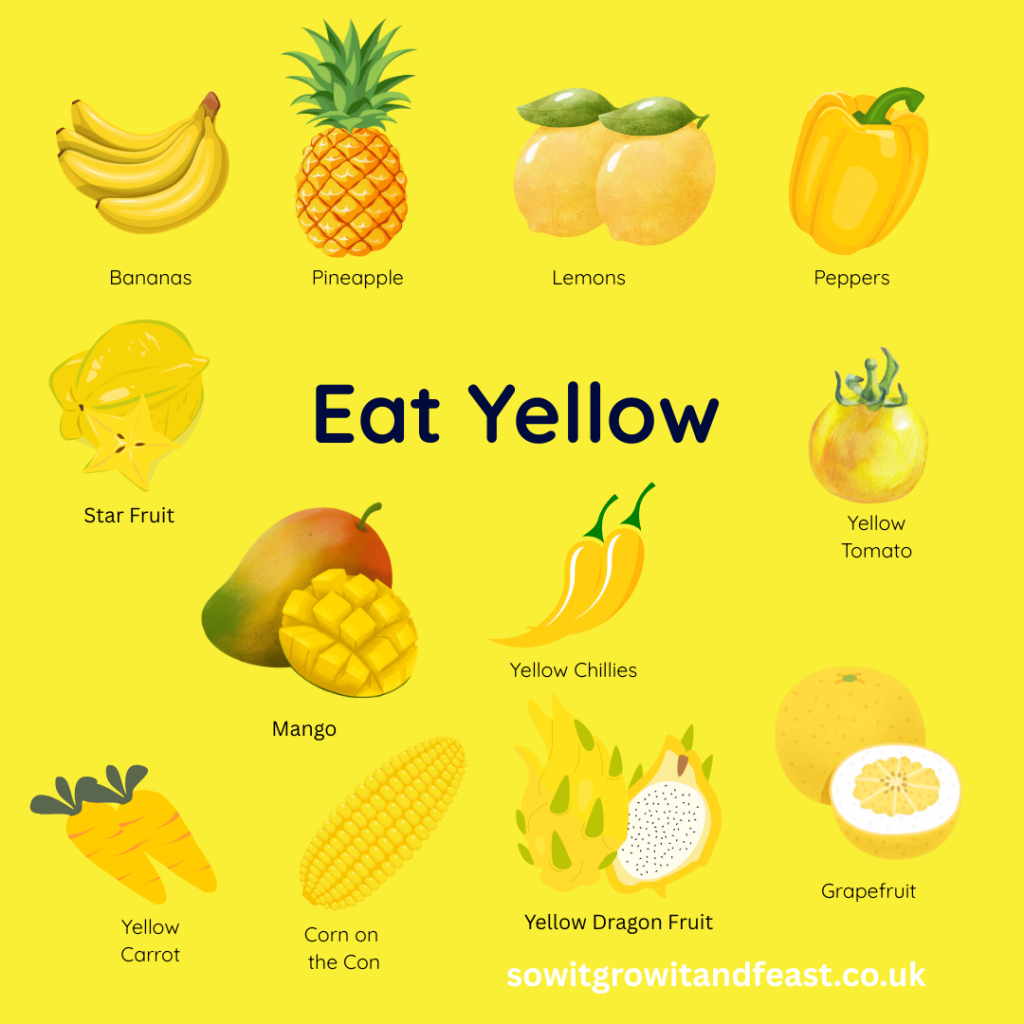
Why Eat Yellow Foods?
The vibrant yellow hue of fruits and vegetables comes from natural plant pigments called carotenoids, particularly beta-carotene, lutein and zeaxanthin. Your body converts beta-carotene into vitamin A, a crucial nutrient for vision, immune function, and skin health. Lutein and zeaxanthin are powerful antioxidants that are especially beneficial for eye health, helping to protect your eyes from harmful light and reducing the risk of age-related macular degeneration.
Beyond carotenoids, yellow foods are also rich in a variety of other essential nutrients. Many are an excellent source of vitamin C, another powerful antioxidant that supports the immune system, promotes collagen production for healthy skin and aids in iron absorption. They also provide key minerals like potassium, which is vital for maintaining healthy blood pressure and heart function.
Adding more yellow to your diet is a simple step with significant rewards. It’s a joyful and delicious way to nourish your body, protect your health, and add a splash of sunshine to your plate.
The Best Yellow Foods for Your Health
Let’s explore some of the most beneficial yellow foods and the specific advantages they offer. Pack your plate with these sunny delights and enjoy all the goodness they bring.
Bananas: The Energy Booster
Bananas are one of the most popular fruits in the world, and for good reason. They are a fantastic source of energy and nutrients.
- Potassium Power: Bananas are famous for their high potassium content. This mineral is essential for heart health, as it helps to regulate blood pressure and balance fluids in the body. It also supports nerve function and muscle contractions, making it a key nutrient for active individuals.
- Sustained Energy: The natural sugars in bananas provide a quick energy boost, while the fibre helps to slow down sugar absorption. This combination offers a source of sustained energy, making bananas an ideal pre-workout snack or a great way to start your day.
- Digestive Health: The fibre in bananas, particularly pectin, supports digestive health by promoting regular bowel movements and feeding the beneficial bacteria in your gut.
Pineapples: The Digestive Aid
This tropical fruit is not only delicious but also packed with unique health benefits.
- Bromelain Boost: Pineapples are the only major dietary source of bromelain, a group of enzymes with powerful anti-inflammatory properties. Bromelain aids digestion by breaking down proteins, which can help reduce bloating and indigestion. It may also help reduce inflammation throughout the body.
- Rich in Vitamin C: Just one cup of pineapple provides more than the recommended daily intake of vitamin C. This essential vitamin strengthens the immune system, promotes healthy skin by supporting collagen production and acts as a powerful antioxidant.
- Manganese for Bone Health: Pineapples are an excellent source of manganese, a mineral that is crucial for bone formation, wound healing and a healthy metabolism.
Yellow Peppers: The Antioxidant Powerhouse
Bright and crunchy, yellow bell peppers are a versatile vegetable that adds colour and nutrients to any meal.
- Exceptional Vitamin C: Yellow peppers are one of the best dietary sources of vitamin C. They contain significantly more of this immune-boosting vitamin than oranges, helping to protect your body from illness and free radical damage.
- Eye Health: Like many yellow foods, they are a good source of lutein and zeaxanthin. These antioxidants accumulate in the retina of the eye, helping to filter harmful blue light and protect against conditions like cataracts and macular degeneration.
- Low in Calories: Yellow peppers are low in calories but high in nutrients and water content, making them a great choice for weight management. They add volume and flavour to meals without adding excess calories.
Lemons: The Ultimate Detoxifier
This zesty citrus fruit is a staple in kitchens around the world, known for its fresh flavour and cleansing properties.
- Liver Health: Drinking warm lemon water in the morning is a popular wellness practice thought to stimulate the liver and aid in detoxification. The citric acid in lemons may help increase bile production, which is essential for digestion and eliminating waste.
- Alkalizing Effect: Although acidic in taste, lemons have an alkalizing effect on the body once metabolized. Maintaining a more alkaline pH is believed to support overall health and reduce the risk of chronic diseases.
- Skin Rejuvenation: The high vitamin C content in lemons promotes collagen synthesis, which is vital for maintaining skin elasticity and a youthful appearance. Its antioxidant properties also help protect the skin from damage.
Yellow Tomatoes: A Milder, Sweeter Choice
While red tomatoes get a lot of attention for their lycopene content, yellow tomatoes offer their own set of unique benefits.
- Lower Acidity: Yellow tomatoes are typically less acidic than their red counterparts, making them a better option for people with sensitive stomachs or acid reflux.
- Rich in Niacin: They are a good source of niacin (vitamin B3), which is important for energy metabolism, nerve function and maintaining healthy skin and digestion.
- Hydration: Like all tomatoes, the yellow varieties have a high water content, which helps you stay hydrated.
Star Fruit: The Exotic Nutrient Star
Also known as carambola, star fruit is a visually appealing fruit with a sweet and slightly tart flavour.
- Packed with Antioxidants: Star fruit contains several types of antioxidants, including quercetin, gallic acid and other flavonoids. These compounds help protect your cells from damage caused by free radicals.
- Heart Health: The fruit is a good source of fibre and potassium, both of which support cardiovascular health. Fibre can help lower cholesterol levels, while potassium helps manage blood pressure.
- A Note of Caution: People with kidney problems should avoid star fruit, as it contains a neurotoxin that can be harmful if the kidneys are unable to filter it out.
Grapefruit: The Metabolism Booster
This large citrus fruit has a distinctive tangy flavour and is often associated with weight loss.
- Supports Weight Management: Grapefruit is low in calories and high in water and fibre, which can help you feel full and eat less. Some studies suggest it may also have a positive effect on insulin levels, which can influence metabolism.
- Blood Health: It is rich in vitamins C and A, which are both crucial for a healthy immune system. The antioxidants in grapefruit also help protect cells from damage.
- Cholesterol Management: The soluble fibre (pectin) in grapefruit may help lower LDL (“bad”) cholesterol levels, contributing to a healthier heart.
Butternut Squash: The Comforting Nutrient Source
Though often thought of as a vegetable, butternut squash is botanically a fruit. It’s a staple of autumn cooking, beloved for its sweet, nutty flavour.
- Vision and Immunity: Butternut squash is an excellent source of beta-carotene, which the body converts to vitamin A. Vitamin A is essential for good vision, a strong immune system and healthy skin.
- Fibre for Fullness: It is high in dietary fibre, which promotes digestive regularity and can help you feel full and satisfied after a meal, aiding in weight management.
- Potassium for Balance: This comforting squash provides a good amount of potassium, helping to balance electrolytes and maintain healthy blood pressure.
Yellow Lentils: The Plant-Based Protein
Yellow lentils or Toor Dal, are a staple in many cuisines, particularly in India. They are quick to cook and have a mild, sweet flavour.
- Excellent Source of Protein: For those following a vegetarian or vegan diet, yellow lentils are a fantastic source of plant-based protein, which is essential for building and repairing tissues.
- Iron for Energy: They are rich in iron, a mineral that is vital for producing red blood cells and transporting oxygen throughout the body. A lack of iron can lead to fatigue.
- Folate for Growth: Yellow lentils are packed with folate, a B-vitamin that is particularly important during pregnancy for fetal development. It also plays a key role in cell growth and function.
Start Eating More Yellow Today
Incorporating more yellow foods into your diet is an easy and enjoyable way to enhance your health. Their vibrant colour is a sign of the rich nutrients they contain, from vision-protecting carotenoids to immune-boosting vitamin C. By adding a variety of these sunny foods to your meals, you support your body in countless ways.
Why not start today? Add sliced banana to your morning porridge, enjoy a handful of yellow peppers with hummus for a snack or squeeze fresh lemon into your water. Every small step towards eating a more colourful diet is a step towards a healthier, more vibrant you.
Further reading: Why You Should Eat More Purple, Why Eating Green Is Good For You, Eat the Rainbow: The Power of Red, Why Orange Foods Deserve a Place on Your Plate, The Incredible Benefits of Growing Your Own Food


